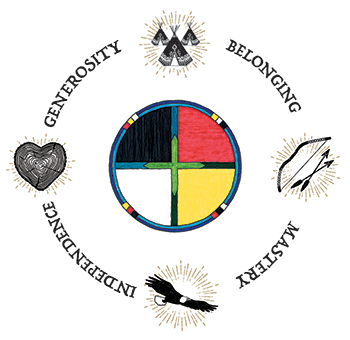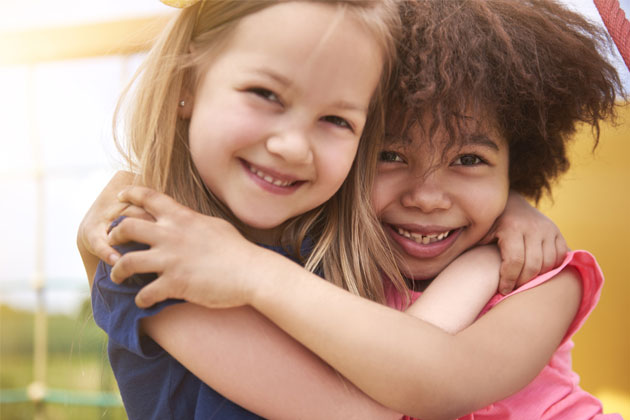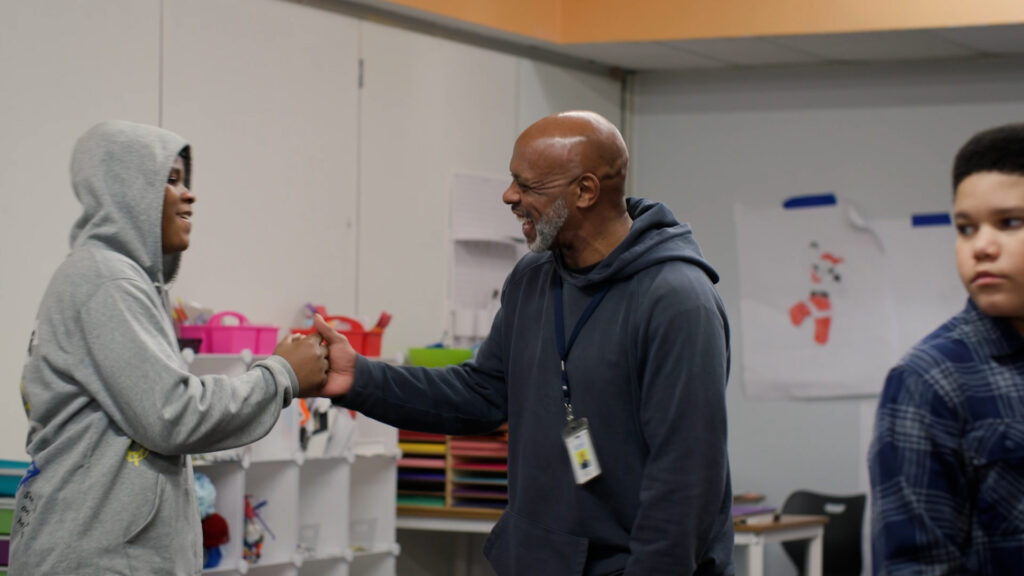Belonging in the Circle of Courage
A positive school environment that promotes belonging can lay the foundation for lifelong interpersonal skills and a positive self-concept.

In Native American and First Nations cultures, significance was nurtured in communities of belonging.
Lakota anthropologist Ella Deloria described the core value of belonging in these simple words: “Be related, somehow, to everyone you know.” Treating others as kin forges powerful social bonds that draw all into relationships of respect. It was observed throughout history that the tribe, not the nuclear family, always ensured the survival of the culture.
The power and influence of positive human relationships in fostering resilience cannot be overstated. Urie Bronfenbrenner, a developmental psychologist renowned for his ecological systems theory of child development, once stated that ”every child needs at least one adult who is irrationally crazy about him or her.” Bronfenbrenner believed this was the greatest factor contributing to one’s healthy well-being later in life. Family and social environmental processes associated with resiliency include a stable, nurturing parent or caregiver, a connection to an adult in the extended family, and consistent family processes such as rituals, traditions, and structure. But when children have experienced or continue to experience trauma and toxic stress, sometimes the need for belonging is not met. What we know now is that if families can’t always provide a sense of belonging and the connections children need, schools are the next best place to meet these needs. This is why the National Center for Traumatic Stress Network has issued a call to action for schools to play a critical role in addressing childhood trauma.




Belonging in Schools
Fostering a sense of belonging in children at school is paramount for their overall well-being and academic success. When children feel that they are an integral part of the school community, they are more likely to engage actively in learning, exhibit positive behaviors, and develop essential social and emotional skills. A strong sense of belonging can also act as a buffer against mental health challenges, as children who feel connected and valued are less prone to feelings of isolation, depression, and anxiety. Moreover, a positive school environment that promotes belonging can lay the foundation for lifelong interpersonal skills and a positive self-concept, equipping students to navigate the complexities of the broader world.
It is critical that every student has an adult, teacher or otherwise, they can trust and feel with whom they have a sense of connection. Start by downloading Starr Commonwealth’s Staff-Wide Connections Assessment.
Schools can play a pivotal role in nurturing a sense of belonging among students. Initiatives like mentorship programs, where older students guide and support younger ones, can help bridge age gaps and foster a sense of community. Schools can also organize inclusive events that celebrate the diverse backgrounds and cultures of their students, thereby promoting acceptance and unity. Peer support groups, where students can share experiences and challenges, can also be instrumental in making students feel heard and understood. Furthermore, ensuring that school policies are inclusive and that there are clear channels for students to voice their concerns can make them feel valued and involved in the school’s decision-making processes.
How to Create a Sense of Belonging in the Classroom
At the classroom level, educators play a crucial role in cultivating a sense of belonging among their students. Teachers can start by creating a safe and inclusive environment where every student feels valued and respected. This can be achieved by setting clear expectations for positive behavior, actively discouraging bullying or exclusionary practices, and celebrating each student’s unique contributions. Incorporating cooperative learning strategies, where students work together in diverse groups, can also promote mutual respect and understanding. Additionally, providing opportunities for students to share about their backgrounds, interests, and experiences can help classmates see the value in each individual and foster deeper connections. Regular check-ins, where teachers take a moment to understand each student’s feelings and concerns, can further ensure that every child feels seen, heard, and integral to the classroom community.

Circle of Courage Belonging Activities
- Circle Time or Morning Meetings
Start the day with a short meeting where students can share something about themselves or discuss their feelings. - Classroom Contracts
Collaboratively create classroom rules or agreements, ensuring every student has a say. - “All About Me” Projects
Allow students to create posters, presentations, or booklets about their lives, interests, and families. - Buddy System
Pair up students to work together on projects or tasks, ensuring that over time, everyone gets to work with everyone else. - Group Projects
Encourage cooperative learning by assigning tasks that require collaboration. - Cultural Celebration Days
Dedicate days to learning about different cultures, perhaps even those represented in the classroom. - Classroom Jobs
Assign roles or tasks to students, rotating them regularly so everyone feels responsible for the classroom community.
- Story Sharing
Have students share stories or experiences, either verbally or in writing, and then discuss or reflect on them as a class. - Compliment Chain
Start a chain where students give compliments to each other, highlighting positive behaviors or qualities. - Class Journals
Create a shared journal where students can write about their feelings, experiences, or stories, and others can read and respond. - Birthday Celebrations
Celebrate each student’s birthday, or for those who don’t celebrate, have a special “appreciation day” for them. - Community Circles
Hold regular discussions about classroom dynamics, addressing any issues and celebrating successes. - Shared Reading
Read a book as a class and discuss themes related to belonging, acceptance, and community. - Class Mascot or Plant
Have a shared responsibility, like taking care of a class pet, mascot, or plant, that everyone contributes to.
- Wall of Fame
Create a space where students’ achievements, both inside and outside of school, are celebrated. - Feedback Sessions
Allow students to provide feedback on lessons or activities, giving them a voice in their learning process. - Mix-it-up Lunches
Every once in a while, assign seating during lunch to encourage students to mingle with peers they might not usually interact with. - Collaborative Art Projects
Create a mural or art piece where every student contributes a part. - Role-playing and Skits
Address issues like exclusion, bullying, or teamwork through role-playing, allowing students to empathize and understand different perspectives. - Gratitude Journals
Encourage students to write about things they’re thankful for, promoting a positive classroom environment.
Build belonging in your school with Starr’s free activity
It takes a village (or rather, a school) full of caring professionals to ensure all kids feel that they belong. Use our free guide to start building relationships today!



